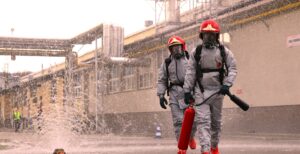
The Impact and Import of ‘Essential’ Workers
Millions of ‘essential’ workers are now seen as the unsung heroes of the COVID-19 pandemic, having risked their lives to ensure that social, safety, and economic systems remained functional throughout that global ordeal. However, despite the incalculable value they delivered, in many cases, the average compensation rate to these workers is at the lowest end of the pay rate scale.
That reality begs a question: if these roles are truly essential to the survival of the community, then why isn’t that value reflected in how much workers get paid for their labor? The clarification of which services are deemed ‘essential’ to the country’s security revealed the significance of today’s wage disparities and how America (the world?) assigns value to the effort of its workforce.
Essential Effort is Not Equitably Rewarded
The COVID-19 pandemic introduced America (and the world) to the concept of ‘essential workers,’ those people whose jobs and efforts are deemed “critical to ensuring the continuity of critical functions in the United States (U.S.).” Their significance to national safety and security was made evident when state and local governments issued blanket ‘stay at home’ orders to mitigate the spread of the disease. While most people followed that mandate, civic leaders quickly realized that not everyone could stop working. Some occupations were determined to be integral to societal functions, and those functions could not stop regardless of the severity of the COVID-19 threat. Accordingly, governments made an exception to the ‘stay at home’ rule and allowed these workers to return to their workplaces and jobs.
What surprised many people, however, was the scope and depth of the job classifications that were deemed ‘essential.’ Across virtually every industry, almost half (47%) of all employees performing essential services were earning less than $15 per hour. In many cases, these jobs didn’t require significant education or skill; instead, workers provided physical labor to perform routine tasks. Cashiers, janitors, and stock clerks, three very familiar ‘essential employee’ examples, averaged just $12 per hour, yet their effort facilitated fundamental economic, sanitation, and supply chain services that supported the entire state.
16 Sectors – Three Priorities
In total, the government identified 16 ‘Critical Infrastructure’ sectors, each of which supplied vital social and community services. Workers were asked to continue to work in these roles throughout the pandemic so there would be no interruption in the nation’s foundational infrastructure operations. And because of the crucial nature of their occupation, government leaders organized their activities into three categories to prioritize the allocation of the first COVID vaccines as those became available.
1a – Healthcare Workers
The Healthcare and Public Health Sector was first on the list of essential services because its activities protect the country from many potentially disastrous hazards, including natural disasters, terrorism attacks, and infectious disease outbreaks. Not surprisingly, this massive workforce was prioritized at the front of the ‘essential service’ line. That line included anyone who labored in any type of health management facility, including paid and unpaid workers and those whose activities were not directly in contact with potentially infected persons.
A notable feature of this sector, however, and one that is relevant to ‘how we value labor’ is the fact that the vast majority of facilities delivering healthcare services of any kind are privately owned. In all corners of the country, access to healthcare services is available only because private organizations have created those resources.
Consequently, the value of the labor provided at those facilities was not established based on its “essential” nature but instead on conventional labor market supply and demand principles.
1b – Non-Healthcare, Frontline Responder Workers
Employees who were deemed second in priority as “essential workers” were those providing emergency services. This population is the frontline workforce of Fire and Rescue Services, Emergency Management, public works, and law enforcement personnel who are first called and first to on the scene of potential disasters. During COVID, these people were exposed to the virus during the course of their work performance, and they were often compelled to work in close proximity to infected persons. Again, like healthcare personnel, they were mostly employed by privately owned companies which were the entities that established their economic value.
1c – Infrastructure Sector Employees
This category of workers encompasses those occupations that provide fundamental support efforts to maintain the local community. Until this pandemic, society hadn’t acknowledged the immense value to the economy that these workers offered; they certainly weren’t classified as ‘essential.’ However, as the “stay at home” order was extended over time, the absence of these workers and the labor they performed was keenly felt by virtually everyone, everywhere. Industries and businesses that maintain this foundational infrastructure workforce include those in water and waste management, food services, transportation and logistics, housing and shelter, information technology and communications, finance, energy, law, media, and non-health-related public safety. And again, most of the employers of these workers are in the private sector and use those metrics to establish and compensate for the relative value of their workforce.
The essential services produced by the other sectors are also significant and also, often, not recognized for the foundational benefits they provide:
The chemical sector, which produces, uses, stores, and transports potentially toxic chemicals and materials.
The commercial facilities sector, which provides gathering spaces for large numbers of people and operates on the principle of open public access.
The critical manufacturing sector, which encompasses the development and implementation of metals and machine production.
The dams sector, which administers and controls the country’s water supply.
The defense industrial base sector, which spans the globe and enables the development and delivery of military weapons systems.
The energy sector, which includes oil, gas, renewable, and other energy sources. More than 80% of this essential service is privately owned.
The government facilities sector, which includes all facilities owned or leased by the nation’s government systems.
The nuclear energy sector, which includes almost all of the country’s civilian nuclear infrastructure.
These next few years will be pivotal for the country as it transitions from the pre-COVID/COVID era into a decidedly different post-COVID economy and community. One key lesson learned throughout the pandemic was that the economic allocation of value on a person’s work effort does not always adequately describe the societal value that action provides. Looking forward, it may be more advantageous to employees, businesses, and the community as a whole to value the labor performed by its workforce as much by the social significance it represents as well as by the time and training needed to accomplish the task.


